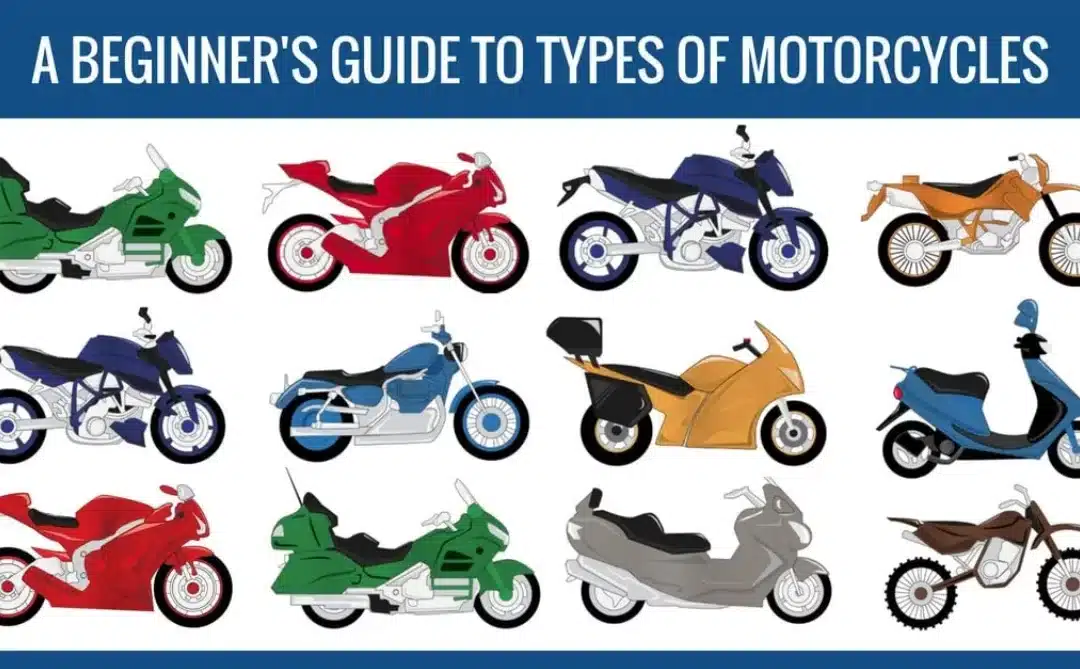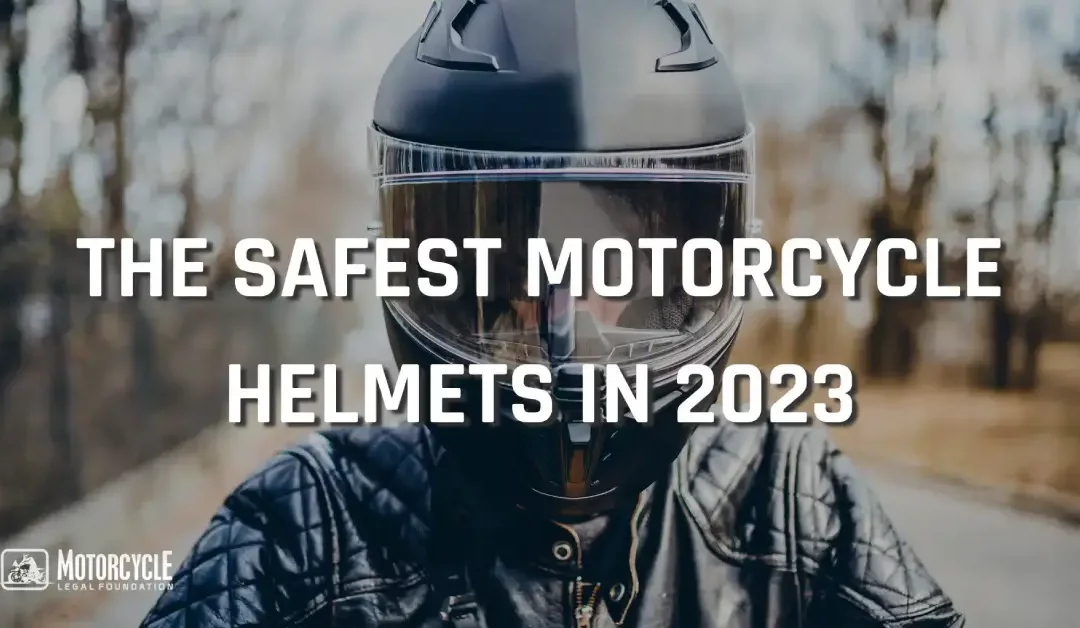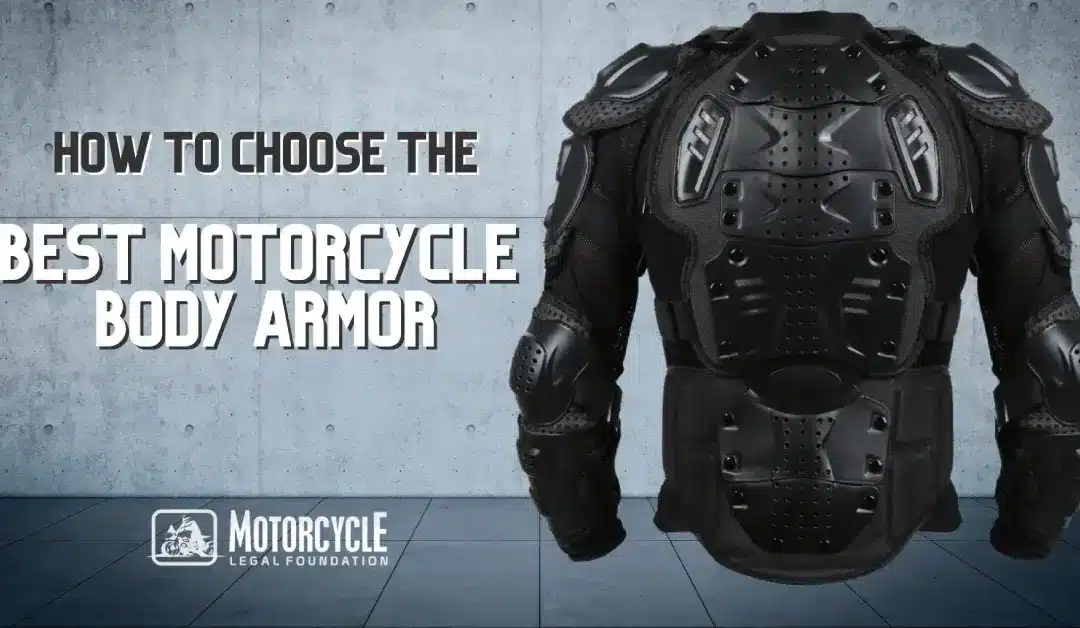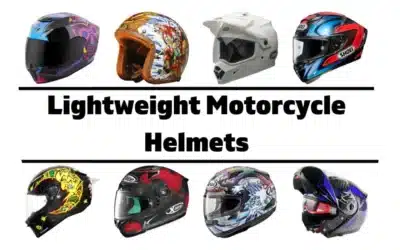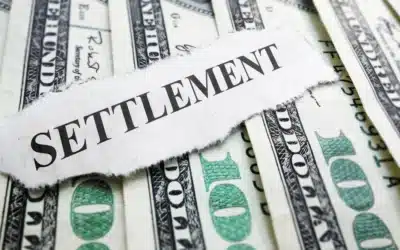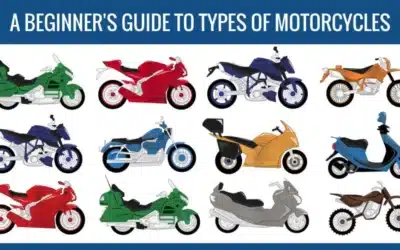You’re making the jump into the adventure of motorcycling, and one of the biggest purchases you’ll initially make is your first motorcycle. Do you buy used? Do you buy new? It’s a tough choice. Add in the option of where to buy from, like a private seller, a dealer, or something in-between, and the process only becomes harder.
To avoid scams of any kind, the most basic golden rule remains the same as always:
“See and examine before you buy. A basic 125 cc motorcycle may be easier to examine than a scooter, but there is an essential trick, and that is to find out from a friend who has a motorcycle model the same as the one you want or from a workshop, what are the areas of the motorcycle in which special attention must be paid.”
Where to Buy a Used Motorcycle
As with a new car, buying a new motorcycle can be very expensive. If you don’t have the money or have bad credit, buying a used or second-hand motorcycle may be a better option. Used bikes are also suitable for beginners looking for entry-level bikes before going into the big league.
You can buy a used motorcycle in the same way you buy a used car. However, just like buying a used car, there are some things you need to know about the sales platform before you make a decision. Here are some things you need to consider when deciding where to buy your machine:
Pricing
If cost is an issue, a private seller will generally offer a lower price than a dealership. The private seller does not have additional items like a staff, a building, and other associated costs with running a business. While the lower cost is tempting initially, it does bring other potential issues with it. See the next few bullet points.
Quality
Buying from privately owned dealerships, a franchised dealer, or indie shops offers a high chance that you’ll buy a reliable motorcycle.
They would easily have a bad reputation if they sold low-quality motorcycles, so only taking trade-ins with good maintenance and first-class value is a good deal for you like the new rider.
Dealers generally only take trade-ins that are in good condition. Expect that they will have good used motorcycles in a well-maintained shape, and they will be ready to ride when you leave the dealership. A dealer will often have a written inspection document to note all things that may need repair in the future and anything they repaired after taking the motorcycle in.
Service History
A private seller may have no evidence to show what has or hasn’t been maintained or repaired under their ownership. Having nothing to show isn’t always the case though. Some owners are very meticulous and may have receipts and documented history of everything concerning the motorcycle. A dealership generally won’t have that history except back to when they took in the motorcycle.
Warranty
A dealer may offer a limited warranty in the case the motorcycle has an issue within a time period or the number of ridden miles from when you buy the motorcycle. A private seller will usually sell a motorcycle as-is with no included or implied warranty. If you have an issue a week into ownership, a dealer will usually take the motorcycle back for service. A private seller rarely will do the same.
Ownership History
Dealerships generally complete an ownership history search to ensure that the motorcycle hasn’t been stolen or was written off by an insurance agency before you purchase it. A private seller may not know the history of the motorcycle, and if they do they may not share it. A dealer should be able to provide you a printed record of the motorcycle history.
Repairs
Dealerships often have a service department that can fix any issues with the motorcycle should they arise after you purchase it. If any maintenance or repairs were completed after it was traded in and you purchased it, you can be assured a trained staff member completed the work properly. A private seller may have done all the maintenance and service on a used motorcycle, and they may not have the same training as a staff member at a dealer or shop.
Financing
Private sellers aren’t generally going to offer you a financing option. You’ll mostly need to pay cash or a cashier’s check from your bank on the spot at the time of purchase. A dealership may have a private option of financing or can handle the transaction through an approved lender. If you need financing for a private buying experience, you’ll need to do all the work to secure the loan, whether that’s through an online lender, your personal bank, or another friend or family member.
Title Transfers
A private seller should give you the title of ownership for the motorcycle (assuming it does not have a lien on it for them), and once in your possession, you’ll need to complete the title transfer with the DMV and any other after-purchase paperwork to make it legal to ride on the street. A dealer often offers all that extra work as part of the transaction, so you can skip the lines at the DMV and just wait for your license to plate to arrive.
Want Cheaper Motorcycle Insurance?
Start saving today with a free quote from our trusted insurance partner.
How to Choose the Right Motorcycle
There are a lot of options out there to buy a used motorcycle. These include private sellers on your favorite websites like Craigslist, Cycle Trader, and Motorcycles on Autotrader, a bigger search result from Google or Bing, or you can simply look up your local motorcycle dealerships and pay them a visit.
It’s always a question of, “what’s best for me as a new rider?” We’ve gathered a few points to think about as you scan the classifieds and before you decide to look at a few used motorcycles in person.
Research the Pricing
Buying a used motorcycle can be a fun or frustrating experience the first time you start looking. You’re excited to get out there and ride, but the purchase cost can vary on what you want to buy and where and how you want to buy it. With the internet so accessible, there are many sites you can look at for ads and approximate values of a used motorcycle without getting too lost and confused. We’ve gathered a few points to consider as you’re shopping for your first motorcycle:
- Do some research online using retail pricing guides, or read used motorcycle classifieds to get a fair market approximate value of the motorcycle you’re interested in.
- Motorcycles rarely stay in an unmodified condition, so you‘ll need to take into consideration if any parts have been added or subtracted from showroom condition and if that adds or subtracts value. This will give you an approximate value to start with and you can price accordingly from there. Here are five online resources to approximate used motorcycle values:
- Have an estimate of the amount that you are can afford within your budget and are willing to pay for the total cost of the motorcycle, including additional fees. These things can easily add up and you end up overpaying beyond your initial budget.
Additional costs that should be considered:
- A setup or dealer-prep fee is normally added to the price of the motorcycle to cover any cleaning and preparation of the motorcycle after purchase. They want to ensure it’s ready to go to the new owner.
- A delivery or transportation fee may be added if the motorcycle was brought to the dealership or shop from another location (perhaps another dealership). If you plan to have the motorcycle delivered to your home or another location after purchase, they may add that cost in too.
- Maintenance expenses may need to be included in the near future after purchase. A dealer may have a recommended maintenance list based on inspection findings or based on the manufacturer’s mileage chart for the motorcycle. A private seller may be able to give you an idea of what has been done and what should be done in the near future based on how they have been riding the motorcycle. The older the motorcycle, or the more miles it has been ridden, the longer the list can be. If you’re not going to do the maintenance yourself, you may have more expenses waiting for you than you realize.
- Sales tax may or may not need to be included. This will depend on your state primarily, but some states do and don’t include a tax. If they do tax the purchase, check what the tax rate is and how much that will translate into for a dollar amount to be included in the total purchase cost.
- Another after purchase cost will be title transfer and registration through the DMV in your state. The cost of this can range from a few dollars to a few hundred dollars.
- One of the last things to check on is buying motorcycle insurance. Most financing lenders will require you to keep full coverage insurance on the motorcycle for the duration of the loan. As a new motorcyclist, that can be expensive depending on what you buy, where you live, and how you plan to use the motorcycle. A private sale paid in full may just need a minimal amount of motorcycle insurance to stay legal with your state regulations. Check what you need for your exact situation and do some shopping around before you commit to insurance.
- One last thing you can do is read a few motorcycle forums before you purchase your first motorcycle. Fellow motorcyclists can give you an informed opinion on the purchase of the motorcycle in question and can offer a suggestion if it’s a fair deal. Typically they are an unbiased informed opinion that can help you understand the buying process as well as the maintenance required in the future.
Contact the Seller
When you have decided to look at a motorcycle in person and potentially purchase it, there are a few simple guidelines to follow for a smooth process. These simple things to consider are typical items to be discussed with the seller (either a private individual or a dealership), and also some things you should and shouldn’t do during the looking and buying process:
- If you first see the motorcycle online, make sure you read the corresponding ad thoroughly. Take a few notes on the motorcycle such as the year, mileage, colors, any maintenance noted, etc. This will help later when you want to compare a few motorcycles or want to share notes on a forum to get an opinion on the motorcycle.
- Be polite in all correspondence with the seller and be courteous of their time. Most individuals work one or more jobs, could have a family, and plenty of other responsibilities to be concerned with. They may take some time between responses because of this. Also, be sure to use the ad to answer all the questions you have, and only ask about things not noted in the ad that is critical for the deal. Use the first correspondence just to get a feel for the motorcycle and seller. Use a face-to-face meeting to get a lot more details on the motorcycle that aren’t critical.
- Don’t try to negotiate on the price without seeing the motorcycle in person with your own eyes, or without a reputable person that knows what the approximate value should be seeing it.
- Schedule a meeting time and location only when you’re ready to go look at the motorcycle. It needs to be at a place and time that both can easily meet, so be flexible with your availability. It’s best to inspect the motorcycle in the daylight because the lighting is much better to see all the details. Low light levels early or late in the day can cast shadows that hide scratches, oil leaks, and things you don’t want to miss.
Inspect the Ride
Once you have done enough research on the motorcycle you are interested in, it’s time to make the appointment to take a look in person. When you have a set time, date, and location, make sure you arrive a few minutes early. This is will give you extra time to be ready to look at the motorcycle up close and personal while asking a few questions at length with the seller. Here’s what you should want to know:
- Service History – Ask the private seller or dealership salesman what the service history on the motorcycle is (if they know). Some private sellers will have a manufacturer booklet that shows what maintenance should be done at a certain mileage. If they have done the service themselves, they may have made notes as to what has been done and when. Most dealerships will add notes to the booklet if they perform the service and have availability to the booklet from the owner. If nothing is available, some owners may just keep an envelope of receipts that can show maintenance history.
- VIN / Title History – Ask to get a copy of the Vehicle Identification Number (VIN) that you can research the motorcycle to ensure it hasn’t been wrecked or stolen in the past. Some dealerships have a service available to do that research for you either included in the purchase or as an added cost. You can do the research on your own also if you have the VIN. A title history report will also show you how many times the motorcycle has been registered with the DMV and when it was done. That will show you how many registered owners have owned the motorcycle in its history.
- Owner’s Manual -Ask the seller or salesman for the owner’s manual if it is available with the motorcycle. It will have a lot of information about how to operate the motorcycle, all the features included, and some of the services required based on mileage. If the seller doesn’t have it, you may be able to order one after purchasing the motorcycle.
- Factory Toolkit – Ask if there is a factory toolkit with the motorcycle. Some motorcycles have a small pouch of tools kept under a seat or in a small storage area for roadside maintenance and emergency repairs. If it’s not included, you can order one later. A dealership may be able to order you one, and you can ask it to be included in the purchase price if you’re shopping at a dealership.
Motorcycle Checklist
When you schedule the in-person inspection, make sure to specify that you’d like to view the motorcycle cold. You want to see it before the engine has been started and warmed up. A hot engine can hide starting issues that may present themselves later on.
A cold motorcycle could also have a worn battery that won’t start the motorcycle well, and seeing it running may mislead you that all is well with the battery. There are a lot of other things to quickly check as you look over the motorcycle, so here are a few that we’d recommend:
Engine
Look over the engine inspecting for any wear or damage that may be on the outside cases, engine block, or any fluid leaks where components meet. Look for coolant leaks on the top of the engine, oil leaks at gasket seams, and the drain plug and any oil drips beneath the motorcycle.
Frame
Look over the frame for any missing paint or corrosion protection that may allow the frame to rust if it is steel rather than aluminum. Look for cracks along with each piece or any missing pieces whether it has fallen off or been taken off purposely.
Suspension
Look for any leaks from shocks or struts that have seals that need to be replaced, or the units themselves need to be replaced. Any protective boots or covers should not have cracks that allow dirt in. Look at any bushings connecting suspension components for being dried out and cracked too.
Bearings
Most bearings on a motorcycle will be sealed and won’t require much maintenance. They should not be greasy indicating the bearing has more grease on the outside than inside. Try to move each bearing and listen for any squeaks that can indicate the bearing needs to be re-greased (if possible) or potentially replaced.
Fluid Leaks
Look for indications of a fluid leak, which could be on the ground or a trail inside the motorcycle as it runs through the motorcycle down to the ground. There should be no oil leaks from the engine. Look for coolant leaks at all rubber hose connections and along with the radiator. You may also be able to smell a leak, such as a coolant smells sweet and oil is pungent also.
Chain and Sprocket
Look over the chain to ensure it is well greased. Chain grease is different than most others used on a motorcycle and it will have a waxy appearance. It’s meant to stick to the chain and protect against dirt and moisture. It shouldn’t come off as you spin the chain.
The sprockets should be relatively clean with no visible cracks. Each sprocket should have sharp teeth that mesh with the chain. The teeth should be pointy or slightly rounded with some use, but not completely rounded like a dull butter knife.
Cables and Wiring
The cables, whether those are related to the clutch, brakes, or speedometer, should not show any signs of fraying (breaks or unraveling), and they should operate smoothly. If you squeeze a lever and you feel resistance or hear a scratching sound, that cable may need to be replaced.
Wiring should not be frayed at any point, and be sure to look for any additional connections that indicate a repair or an additional after the motorcycle left the showroom floor initially.
Tires
All tires have a wear indicator between the treads to indicate when the tread depth is too small for safe use in wet conditions. If you look between the treads, you should see a depth indicator. If it shows signs of wear (meaning the tread is well worn), add tires to the ‘need to be purchased soon’ list.
Tires should also not be cracked (sometimes called dry rotted) from sitting too long. They should be holding air, and you can check their pressure with a simple pressure gauge before you take a ride.
Bodywork
Take note of the condition of any bodywork. Does it have any noticeable scratches, is anything missing, has anything been changed that you can see? If the motorcycle has some miles on it, the bodywork should look a little worn from rocks and bugs over the miles on the road. If the bodywork looks too perfect, it may have been replaced. Be sure to ask if it’s the original for the motorcycle or if it has been replaced.
Bar Ends, Brake Levers, and Foot pegs
When motorcycles fall over, the bar ends, levers and foot pegs generally are the first things that hit the ground. If they are scuffed or scratched, be sure to ask the seller why. Did it just fall over in a parking lot, or did it hit the ground at a low speed? Also look at each item to make sure they are not bent from the normal shape, either from falling or if they were bent and then attempted to be straightened.
Forks
The forks should be straight and scratch-free. The seals shouldn’t show any signs of leaking fluid, nor should they be cracked and have the potential to leak in the future. If they look worn, they should be added to the future replacement list.
Battery
Check the date on the battery tag. It should show a dot or a symbol on the month and year when it was first put into service on the motorcycle. A newer date may indicate the battery was replaced recently. Make sure the battery has a vent tube connected to it and that it is routed down away from the battery. It usually goes down inside the bodywork.
The battery should be clean without debris on top of it (leaves, grass, bugs, etc.). The battery terminals should also be clean and show no corrosion with tight connections to the positive and negative cables. Also, note if any other connections have been added to the battery cables or terminals. If so, be sure to ask what they are and why they are there.
Brake Fluid
Check the condition and the level of the brake fluid. The reservoir should be a transparent material or have a sight window with an indication of the appropriate level. If it is low, that can affect braking performance. You’ll want it full to the indication mark before you take a test ride.
The fluid should be a light tan or caramel color. As it becomes darker (to a dark brown) it should be replaced. The motorcycle owner’s manual may dictate when the fluid should be replaced based on a mileage amount also.
Fuel Tank
Check the fuel tank top to bottom. The top should have a cap, whether it’s a locking cap or just a simple screw-on cap. It should seal tightly and present no odor of gasoline. The tank will be mounted to the frame in a couple or a few places. Look at each mounting point to ensure it has a rubber mount between the tank and the frame, and also that the connection point isn’t cracked.
There should be one or more rubber fuel lines from the bottom of the fuel tank to the engine. Make sure it isn’t cracked, has clamps at the end keeping it connected and properly sealed, and the tank has no visible leaks.
Lighting
The motorcycle may have a headlight that comes on with the key depending on the age of the motorcycle. If it’s an older model, it may have a switch to turn it on and off separately from the ignition key.
All lights should work from turn signals flashing, indicators lighting up in the gauges, and the light on the license plate. If something doesn’t work, be sure to ask why.
Visual Check
Beyond everything listed, stand back from the motorcycle and do a simple visual check. The internet is full of images of the motorcycle as it would appear in a showroom. Print a few off and take them with you to visually compare what it should look like and what it does look like.
Motorcycle Parts for All Makes and Models
Everything from basic to high-end. Motorcycle parts that will fit your bike and budget.
Take a Test Ride
Taking a test ride is a tough subject because there is a lot of liability involved for all parties. A private seller may not allow you to ride the motorcycle, and if they do, they will most likely expect you to leave something in return (maybe a car) or want some form of money to hold the motorcycle. If you have an accident while riding it, it’s still their motorcycle and insurance may not cover the damage since you are not insured on it. A dealership will be more likely to allow you to ride the motorcycle on a test ride, but it’s still a discussion point. It’s their right to refuse a ride for you.
If you take a motorcycle on a test ride, don’t worry too much if it doesn’t feel like it’s set up perfectly for you. It most likely won’t be. Now is the time to feel and hear how well the motorcycle runs. You’ve already completed a visual inspection of the motorcycle before the ride. Listen for odd noises like squeaks, rattles, and loose components. Do bearings squeak when the suspension moves or when the wheels turn? Does something sound loose through vibration? Do the brakes feel soft when you come to a stop? Look and listen for any red flags that just don’t seem right. Anything you find will need to be discussed with the seller or dealership and anything that needs to be fixed may need to be added to the future cost of the purchase.
How to Negotiate the Price
When you’ve decided that you want to purchase the motorcycle, it’s time to negotiate on the price. By this point, you have already done the research to know what a fair market price for the motorcycle is.
That includes the fair price (most likely a price range), any modifications that can affect the price, any future maintenance needs that may add to the purchase cost, and any damage that may have occurred in the past. Before you ask if the seller is negotiable, put yourself in their shoes. Is their price fair? What would you say if you were the seller and someone asked to pay a different price? The seller may be a little high and have wiggle room to reduce the price.
Politely ask if they are negotiable on the price. If they are, be prepared to make an offer with a specific dollar figure. Be the person that offers first and doesn’t ask the seller how low they can go. Offer what you’re prepared to pay and work on the final price from there if needed.
Additional Tips
Transporting the Motorcycle
Once you have purchased the motorcycle, the last question is how to take possession. Do you ride it home, put it on a trailer to tow it home, or can someone deliver it to you? Most dealerships can transport it for you to your home. It may or may not be an extra charge, and will need to be discussed during the purchase.
A private seller may not have a trailer, but you can ask about a delivery option. If nothing else, both should allow you to ride away after purchase if your license is in your pocket and you have insurance on the motorcycle. You need to decide what’s best for your situation.
Don’t Rush the Process
Purchasing a motorcycle can be a lengthy process, and it’s usually an important investment financially for your riding career.
- Be sure to take your time shopping for a motorcycle. Make sure you understand the different types of motorcycles, and how they compare to one another.
- Review a few before you make your selection.
- Make an informed decision and don’t feel rushed to purchase the motorcycle right then and there on the spot if the motorcycle didn’t meet your expectations or the deal doesn’t feel right.
- Buying your first motorcycle may seem like a daunting adventure, but it doesn’t have to be.
- Do your research ahead of time while you are shopping, whether that’s online or walking through a dealership for your first purchase.
- Ask a few questions of the seller ahead of time if you find one that piques your interest.
When it’s time to look at the motorcycle in person, take note of all the detail we’ve mentioned and be prepared to ask a lot of questions. Enjoy your test ride, be cognizant of anything you find on the ride, and when the deal is right, make a fair offer. Enjoy your new purchase, and be sure to get it home safely to get your gear for your maiden voyage. Remember ATGATT and be safe out there!


